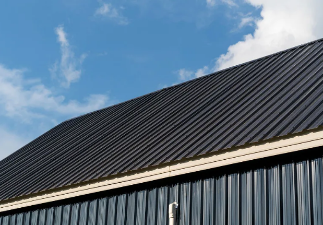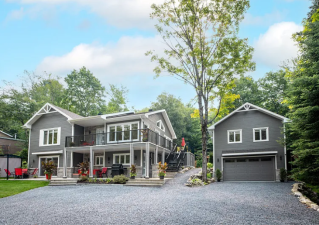The purpose of decorating the bathroom is to improve the convenience of life. After all, it is a place we frequently visit every day. However, many details are often overlooked during decoration. Even if you invest a lot of energy and money in bathroom decoration, if these details are not handled properly, you will feel inconvenient in the future.
Let's take stock of the mistakes that are often overlooked but need to be avoided in bathroom decoration to help you avoid these common traps on the road to decoration.

The purpose of decorating the bathroom is to improve the convenience of life. After all, it is a place we frequently visit every day. However, many details are often overlooked during decoration. Even if you invest a lot of energy and money in bathroom decoration, if these details are not handled properly, you will feel inconvenient in the future.
Let's take stock of the mistakes that are often overlooked but need to be avoided in bathroom decoration to help you avoid these common traps on the road to decoration.

- Where bathroom decoration should not step on thunder
Error 1: Don't be too fast in tile seam beautification, you should wait 48 hours before doing it
For bathroom decoration, tile laying is indispensable, and then seam beautification treatment is required. Many people are eager to beautify the tiles as soon as they are laid, which is actually not appropriate, because the tiles and cement slurry are not yet stable and are easy to fall off. It is recommended to wait for 48 hours after laying the tiles before beautifying the seams.
Error 2: Don't choose too thin tempered glass for the shower room, 6 to 8mm is the most suitable
Many families prefer tempered glass to separate the shower area when decorating the bathroom, which can effectively protect privacy and prevent splashing. However, be careful when choosing tempered glass to avoid being too thin. It should be at least 6mm. If it is too thin, it will cause great safety hazards and will be easy to break.
In addition, tempered glass must be equipped with explosion-proof film to enhance safety. When it breaks, it can reduce the area of fragments and effectively protect people from injury.
Error 3: Do not install the door frame in advance. The tiles should be laid before installation to prevent moisture.
The first step in bathroom decoration is waterproof layer and water and electricity transformation, followed by paving tiles, and finally installing door frames. This order is appropriate. If the door frame is installed first, the tiles are prone to unevenness and large gaps due to size errors when laying, and they are prone to moisture in the future.
Error 4: The thicker the waterproof layer of the bathroom is, the better it is. "Thin coating and multiple layers" is the most suitable.
At the same time, the thicker the waterproof layer of the bathroom is, the better it is. Blindly thick coating will waste materials and reduce efficiency. The correct approach is to use "thin coating and multiple layers", leaving gaps between each layer, and apply 2 to 3 layers to ensure waterproof performance.
When applying the waterproof layer, it is necessary to remember that both the ground and the wall need to be processed. The recommended height of the wall waterproof layer is at least 30 cm to ensure a comprehensive waterproof effect.
Error 5: Do not ignore the drainage slope of the dry and wet areas. Separate design can prevent water accumulation
Bathroom drainage is easily overlooked, and designing a good drainage slope and floor drain is the key. It is necessary to pay attention to the separate design of dry and wet areas, rather than the uniform slope of the whole bathroom, so as to avoid water accumulation caused by the tilt of the ground. Dry and wet separation can ensure a good drainage effect.
- Do a good job in bathroom waterproofing and drainage, worry-free use in the later stage
Key point ❶: The waterproof layer of the bathroom must be well done, and the waterproof material must be professional
Bathroom waterproofing and drainage are crucial and related to the comfort of use. The waterproof layer is the primary line of defense, and professional materials must be selected, the construction must be rigorous, and the thickness must be uniform and without gaps. Remember not to lay tiles directly on the waterproof layer, etc., so as not to affect waterproof performance.
Key point ❷: Choose a suitable location for the floor drain, and there must be a certain drainage slope
For bathroom decoration, drainage design is also critical, and the location and size of the floor drain must be accurate. The floor drain should be placed at the lowest point to ensure smooth water flow. The ground slope is also important. It is recommended to have a slope of 1:100, that is, a drop of one centimeter per 100 meters, to prevent stagnant water accumulation.
Key point ❸: Do a good job of dividing the dry and wet areas to avoid cross contamination
To prevent cross contamination, the bathroom needs to be separated into dry and wet areas. The washing area and shower area should be separated, and glass partitions and other materials can be used for isolation. However, the height of the partition should not exceed 1.8 meters to maintain the sense of transparency of space.


